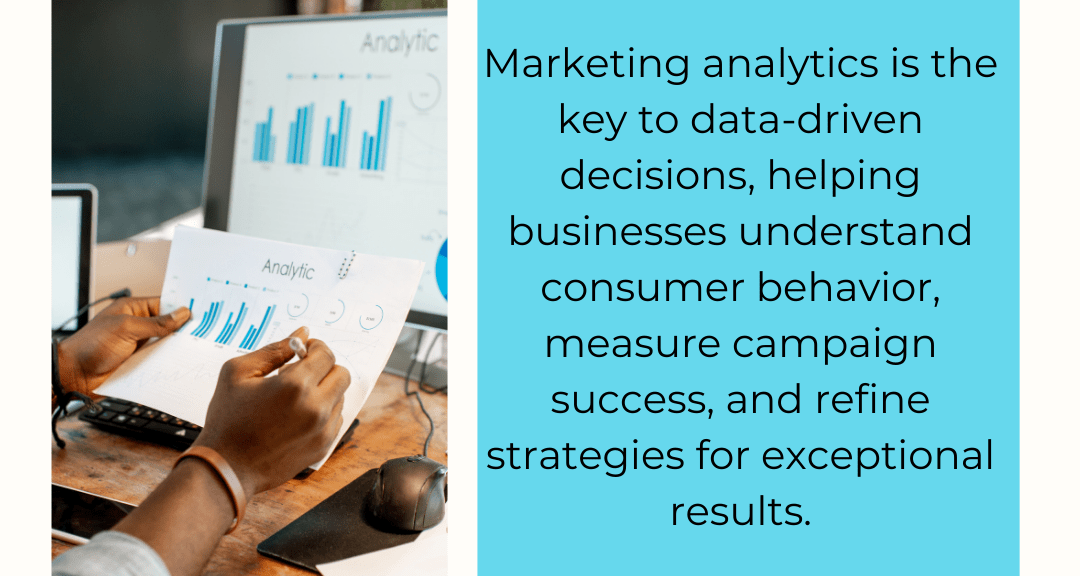In today’s fast-paced digital landscape, where competition is fierce and consumer behaviour is ever-evolving, businesses are compelled to adapt and innovate their marketing strategies. Gone are the days of relying on gut feelings and hunches when it comes to gauging the success of marketing campaigns. Enter marketing analytics, the beacon of insight that illuminates the path to effective decision-making and success in the modern business world.
The Essence of Marketing Analytics
Marketing analytics is not just a buzzword; it’s a transformative force that empowers businesses to harness the vast sea of data generated by their marketing efforts. It involves the systematic collection, processing, and analysis of data to evaluate the impact of marketing campaigns, monitor Key Performance Indicators (KPIs), and ultimately steer strategic decisions based on empirical evidence rather than conjecture.
Collecting the Precious Data
At the heart of marketing analytics lies the process of data collection. In this age of information overload, businesses have access to an abundance of data from various sources: website traffic, social media interactions, email open rates, customer demographics, and more. This data serves as the raw material that, when refined through analytics, can provide invaluable insights.
Tracking Key Performance Indicators (KPIs)
Key Performance Indicators are the navigational stars that guide businesses towards their objectives. Whether it’s increasing website traffic, boosting conversion rates, or enhancing brand engagement, KPIs provide measurable targets that illuminate the path to success. Marketing analytics enables the tracking of these KPIs in real-time, allowing marketers to understand what’s working and what’s not and make adjustments as needed.
Unveiling the Story Through Analysis
Data alone is like a puzzle with scattered pieces waiting to be assembled. Marketing analytics is the glue that puts these pieces together to create a comprehensive picture. Through advanced analytical techniques, businesses can uncover patterns, correlations, and trends that would remain hidden otherwise. This empowers marketers to understand customer behaviour, preferences, and pain points, which in turn informs the creation of more targeted and impactful campaigns.
The Data-Driven Decision Revolution
Gone are the days of ‘best guesses’ and ‘gut feelings’ dictating marketing strategies. With the advent of marketing analytics, decisions are now rooted in hard evidence. Businesses can optimise their campaigns based on empirical insights, allocate resources more effectively, and adapt swiftly to changing market dynamics. This data-driven approach not only minimises risks but also enhances the return on investment (ROI) of marketing efforts.
Embracing Predictive Analytics
The power of marketing analytics doesn’t stop at understanding the past and present; it extends to predicting the future. Predictive analytics leverages historical data to forecast future trends, enabling businesses to stay ahead of the curve. From predicting customer churn to forecasting market demand, this capability empowers marketers to proactively address challenges and seize opportunities.
Conclusion
In the ever-evolving landscape of marketing, staying relevant and successful requires more than just creativity; it demands informed decision-making backed by data. Marketing analytics is the conduit that transforms raw data into actionable insights, offering businesses the tools to assess the effectiveness of their campaigns, track KPIs, and make strategic decisions that drive growth. As technology continues to advance, embracing marketing analytics isn’t just an option; it’s a necessity for any business aiming to thrive in the digital age. So, harness the power of data, embrace analytics, and let your marketing strategies be guided by evidence, not assumptions.


